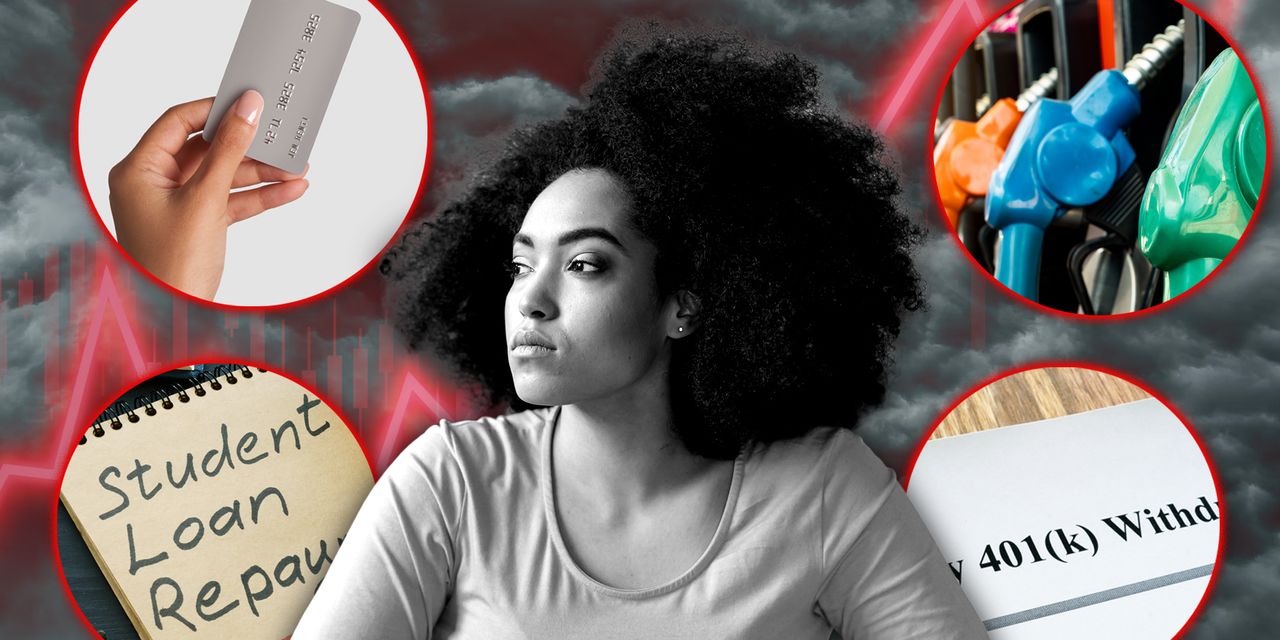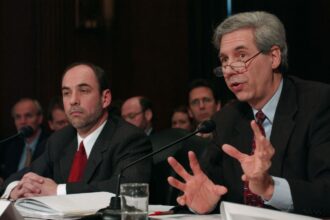Americans are facing economic challenges on multiple fronts.
U.S. consumer confidence fell to a four-month low in September, as people became more concerned about rising interest rates, an increased cost of living and a potential government shutdown, the Conference Board said Tuesday.
“To use a phrase from my childhood in the South, households are ‘sick and tired’ of inflation,” Stephen Stanley, chief U.S. economist at Santander U.S. Capital Markets, wrote in a note. The “average consumer is spending a substantial portion of their budget on food and energy and [is] unwilling to ignore those prices,” he added.
““We just see a series of these things adding up to a less vibrant consumer.””
And consumers have begun showing signs that they are, in some respects, behaving more cautiously. “We just see a series of these things adding up to a less vibrant consumer,” Doug Duncan, senior vice president and chief economist at Fannie Mae, told MarketWatch, citing rising credit-card delinquencies as well as the resumption of student-loan payments in October.
There is “some evidence that higher-income households are moving more to debit cards,” Duncan said, “which is a mark of conservatism” in spending.
Here are some other areas where consumers are feeling the pinch:
Credit-card balances are increasing
Fannie Mae
FNMA,
is expecting the U.S. economy to enter a recession at the start of 2024, which would come at a bad time for Americans.
Credit-card balances rose by $45 billion to $1.03 trillion in the second quarter of 2023, the Federal Reserve Bank of New York said in a recent report. That’s the highest level since the bank began tracking the data in 1999. “There’s an increase in households that are rolling balances over rather than paying them off,” Duncan said.
The average monthly credit-card balance climbed to $5,947 in the second quarter, up from $5,270 a year ago, TransUnion
TRU,
said in a recent report. Half of Americans who have credit cards are carrying revolving debt at an average overall self-reported interest rate of 14.8%, according to a survey by J.D. Power.
Credit-card delinquencies “appear to have normalized to pre-pandemic levels” as consumer budgets are pressured by rising prices, the Federal Reserve said in August. Delinquency rates were “roughly flat” in the second quarter, although the share of credit-card and auto-loan debt newly transitioning into delinquency increased slightly during that period, it added.
Read: Is there a subprime credit-card crisis on the horizon?
Student-loan payments will resume next month
As people resume making payments on their student debt, they are likely to feel added stress, Duncan said, as they allocate more of their disposable income toward their loans several years after those payments were paused during the pandemic.
Approximately 4.6 million borrowers who were delinquent or in default before the payment pause in March 2020 had a balance of $10,000 or less, according to the Department of Education, while nearly 7.2 million borrowers who were delinquent or in default in 2019, had a balance of $20,000 or less.
On average, households with student debt will be paying about $400 a month toward that debt. But some consumers — such as those who have higher balances from advanced-degree programs — will feel the stress more than others. “Households will likely be able to manage it on average, but it will cut into other forms of consumption,” Duncan said.
Related: When do student-loan payments resume? Here are 6 tips to get ready.
More 401(k) hardship withdrawals
The rising cost of living is also pushing some people to withdraw funds from their 401(k) to cover emergency costs.
The proportion of people with a 401(k) who took a hardship distribution — a withdrawal due to an immediate and heavy financial need — rose to 0.52% in the second quarter, up from 0.4% in the previous quarter, according to research from Bank of America
BAC,
The proportion of people who have taken a hardship withdrawal from their 401(k) or other retirement accounts is rising, reports show.
“The proportion of people who have taken a hardship withdrawal from their 401(k) or other retirement accounts is rising, reports show.”
Some 37% of workers have taken a loan, early withdrawal or hardship withdrawal from their 401(k) or similar plan or Individual Retirement Account, according to a separate report released earlier this year by the nonprofit Transamerica Center for Retirement Studies, in collaboration with the Transamerica Institute.
That 37% — which TCRS called a “concerning percentage” — was in line with last year’s survey results, but higher than the response of 34% seen in 2021. Of that 37%, 30% took out a loan, while 21% took an early or a hardship withdrawal, the study found.
When a person withdraws funds from a retirement plan before turning 65 or reaching the plan’s normal retirement age, they can be on the hook for an additional income tax of 10% of the amount of the withdrawal, according to the Internal Revenue Service. IRA withdrawals are considered early before age 59½.
Read: Are inflation and debt pushing you to raid your retirement savings early? You’re not alone.
Gas prices increasing
Renewed concerns about tighter oil supply are pushing gas prices higher. Saudi Arabia and Russia recently announced supply cuts that will continue through the end of the year. Crude-oil costs make up half the cost of a gallon of gas, according to the U.S. Energy Information Administration, while federal and state-gas taxes account for 14% of the cost.
With oil prices surging and Brent crude
BRNX23,
at more than $95 a barrel, consumers may begin to feel the pressure of rising fuel costs.
“Consumers continued to be preoccupied with rising prices in general, and for groceries and gasoline in particular,” Dana Peterson, chief economist at the Conference Board, said Tuesday.
Nationally, gas prices have dipped slightly over the last week and stand at an average of $3.84 a gallon as of Sept. 27, according to AAA. Western states are feeling the pinch more than others — in California, for instance, gas prices are averaging $5.89, with Los Angeles drivers having to pay over $6 a gallon.
Jillian Berman and Jessica Hall contributed.
Read the full article here










